One of Ferdinand von Mannlicher’s very last firearms was an experimental 1901/04 carbine, scaled up from its original pistol cartridge to a new 7.63x32mm intermediate-sized cartridge. I had a video on one of these very scarce carbines from a previous Julia auction, and also took a bunch of detailed photos of the gun disassembled. Mechanically, the gun is an evolution of his 1896/1901 automatic pistol and the 1901 carbine made from that pistol. It locks using a short recoil action and a pivoting locking block, not terribly unlike the C96 Mauser pistol. One of the shortcomings of the 1901 carbine was that the handguard was fixed to the recoiling barrel, so that a firm grip on the handguard would cause the gun to malfunction. The 1901/04 variant of the carbine fixed that issue by connecting the front handguard to the trigger frame, which did not move during cycling.
Here are the photos:




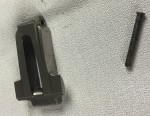
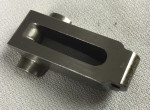
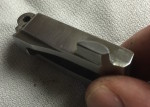
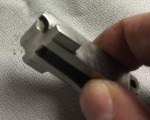
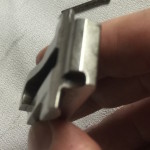
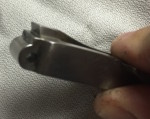







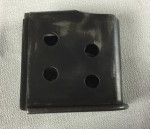
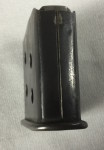
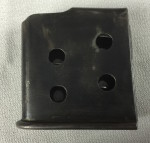


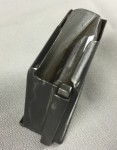
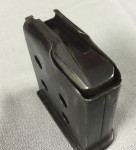



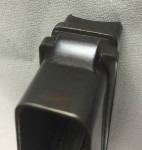
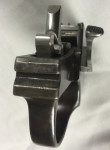
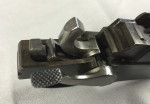


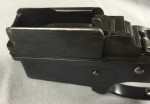
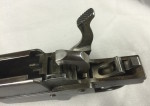
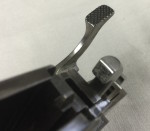
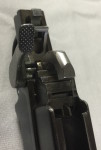
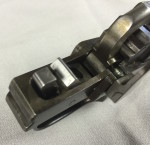







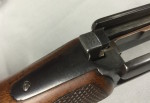




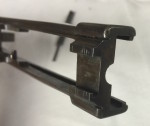


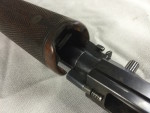

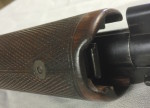
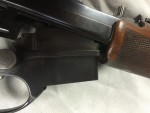


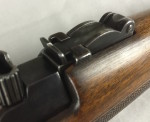
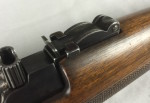
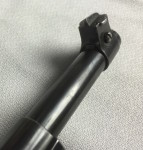
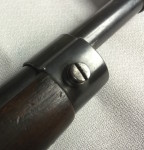











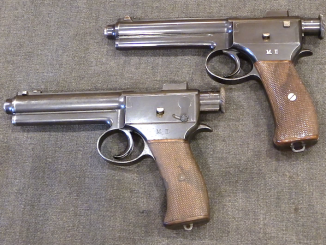
It seems carbines like this are generally regarded by modern American cops as useless against any criminals with more spunk than petty purse snatchers. Nowadays you will see tons of SWAT units with MP5’s and AR-15’s ready to turn someone into a splatter painting. Pistol carbines have been derided as “cowboy” guns or sissy gallery pieces after Ruger ended production of its police carbine. I hope nobody forgets that European cops were once issued bolt-action rifles and matching bayonets…
Did I mess up?
In Spain, the “Destroyer” bolt-action carbines in 9 x 23mm Largo were issued to municipal police on the principle of being easier to hit something with than a pistol, having enough power to get the job done, but not being as prone to potentially dangerous overpenetration in a built-up area as a rifle firing a full-powered cartridge.
The reasoning was not unlike that behind the “police” versions of the Winchester M1907 and M1910 carbines in .35 and .351 WSL, and which later gave birth to the U.S. M1 .30 Carbine.
One interesting sidelight is that one version of the “Destroyer” had an underbarrel tubular magazine very like that of most lever-action rifles such as Winchesters or Marlins.
While tubular magazine arms firing rimless rifle cartridges are by no means rare, I believe this may be the only example of a tubular-magazine longarm designed around a rimless handgun cartridge.
cheers
eon
“only example of a tubular-magazine longarm designed around a rimless handgun cartridge.”
There were also Winchester 1892 firing .45 Auto cartridge used in Argentine.
See photo here: http://www.tircollection.com/t7539-winchester-1892-santa-fe
in post titled Qui parle Allemand?
“connecting the front handguard to the trigger frame”
I think that need to provide barrel movement (barrel guide) is main reason why recoil-operation is rarely chosen for usage in rifles.
Good looking carbine looks comfortable and fun to shoot. The bolt handle is interesting and I wonder if it would be distracting with it sitting in front of the rear graduated sight?
You have described the “distraction” which is also found on the early Thompson SMG’s, since they all have their bolt handles right in front of the rear sight (the bolt handle is on top of the receiver in the M1923 and onwards until the more modern Thompson M1 came out and moved the handle to the right hand side of the receiver), thus requiring that the handles be hollowed through in order not to obstruct your sight picture.
Between the Mannlicher carbine and the Thompson in the 1921/1928 (ect.) series, I think the Mannlicher would win in the distracting bolt handle competition. The Thompson ‘s rear sight base covers up the bolt handle to some extent, the Mannlicher’s is in full view.
Though the breechbolt works completely inside the upper receiver without the danger of giving a punch into the shoter’s eye, the same should be in hazard of severly hammer biting in follow up shots by the cause of outside cocking aid lever.
It’s interesting to speculate what might have happened in the history of intermediate cartridges and the guns that used them had this gun been more successful. Ian (or anyone), what were the specs of that 7.63x32mm Mannlicher round? I wonder how it would compare to the .30 Carbine, for example, or to the hotter loads of 7.62×25mm Tokarev?
Could this be it?
https://forum.cartridgecollectors.org/t/7-63-mm-mannlicher-experimental/250
Please scratch that, on second glance it’s obviously the pistol round, which just happens to have the same overall length as the carbine’s case length.
Here’s a little info on the cartridge:
https://forum.cartridgecollectors.org/t/info-on-7-63mm-long-mannlicher-cartridge/16067
This cartridge would be about the same as a 300 Blackout. So with a 125 grain bullet, around 2200 fps would be archived.
Enough extra power to be a well ahead of the .30 carbine or 7.62×25.
I didn’t find any performance figures, but I did find some weights:
7.65×32 Mannlicher Lang:
Charge: 0.7g (unknown powder type)
Bullet: 7.6g
For comparison…
7.65×25 Mannlicher:
Charge: 0.42…0.5g (depending on powder type)
Bullet: 5.4…5.5g
v0 apprx. 360 m/s (from pistols, other sources say ~450 m/s from carbines)
Happen it’s similar to: https://en.m.wikipedia.org/wiki/7×33mm_Sako
Dimensionally etc.
“what might have happened in the history of intermediate cartridges and the guns that used them had this gun been more successful”
Nothing vast different from OurTimeLine (OTL).
From manufacturing standpoint there is no big difference – if you have technology for production of (full-power) rifle cartridge, you should be also to make intermediate cartridge (reverse is also true).
Main problem is to convince potential user than he need such cartridge. For example France during WW1 used .351 Winchester Self-Loading cartridge, which spawned 8×35 Ribeyrolle, but it was not adopted.
Remember that before 1914 even machine gun was considered as specialized weapon rather than general-purpose and doctrine was not always up-to-date with technology.
It seems carbine was made on the base of Mannlicher pistol of 1896. Simple and cheap version ov veapon for voyagers or tourists
Absolutely beautiful little carbine.
Agreed. Too bad beauties like this one are relegated to decorative duty today…
Thanks, all for the replies to my cartridge question. From AMX’s numbers above, and if I estimate that the 7.63x35mm Mannlicher long cartridge was intended to at least match the muzzle velocity of the short cartridge from the carbine barrel but with a heavier bullet, then I get these numbers in imperial units: 117g @ 1476 fps = 566 ft-lb at the muzzle. For comparison, that’s significantly more energy than 9mm from even an 8″ artillery Luger or .45 ACP from a 5″ Colt 1911 or a 10.5″ Thompson and even a little more than .357 Magnum from a 4″ revolver. Still, that’s less than 3/4 the energy of .357 Magnum from a 16″ Winchester and little more than 1/2 the energy of .30 Carbine from an M1 Carbine, and not even close to later intermediate cartridges that led to modern assault rifles. Still, a carbine in this caliber with a large-capacity magazine would have been pretty handy in the trenches of WWI.
If we consider cartridges ahead of its time, I want to point to 8.2×44 Krnka:
http://www.municion.org/Krnka/8_2Krnka.htm
Which become commercially available in 1899, and in my opinion considering other cartridge available in 1899:
-quite short (overall length = 60,15mm) = suitable for autoloaders
-bottleneck with shallow body taper
-truly rimless
Photos of weapon firing this cartridge:
http://qsy-complains-a-lot.tumblr.com/post/146218311833/qsy-complains-a-lot-roth-krnka-m1899-rifle
The numbers given by AMX seem to be doubtful, though. 300 fps increase in muzzle velocity going from 4.5″ barrel to carbine length barrel (8 inch or more) is a lot, unless the cartridge was loaded with quite slow powder, but then it wouldn’t get up to 1180 fps from a pistol barrel.
For example, the ballistically similar 7.65×20 Longue launched a 90 grain bullet at 1115 fps from the Mlé 1935A pistol with a 4.3″ barrel. From the 8.7″ barrel of the MAS 1938 SMG it attained a muzzle velocity of 1245 fps, that is, only a 130 fps increase. Now, the powder used by the French for pistol cartridges was SNPE Tbis, which admittedly was a fairly fast powder. However, 0.5 grams is only 7.7 grains, so I doubt the Mannlicher cartridge could have used a very slow powder, either.
Still a lot more powder than the 7.65×20 had – the charge I find for that is only 0.32 grams.
Plus, the Mannlicher carbines had noticeably longer barrels than that, 30cm (~11.75″)
It’s possible that 450 m/s is too high, but it’s from a historical source; specifically the manual available on this page:
https://www.forgottenweapons.com/early-automatic-pistols/mannlicher-1910-automatic-pistol/
Tbis was a more energetic powder to begin with than the ones used in the beginning of the Century, state of the art in the 1920s. But it’s also possible that it’s actually the pistol muzzle velocity that is wrong with the Mannlicher cartridge, or it could be that 7.7 grains was a big load with lots of unburnt powder left from a pistol barrel. Without knowledge of th exact powder used it’s impossible to say for sure. I was merely pointing out that the muzzle velocity numbers seem unlikely to me, but that of course doesn’t prove anyhting
Going from 9 to 12 inch barrel length, however, is not very significant at least with modern pistol powders. Muzzle velocity tends to increase nearly linearly to about 6″ but then it levels off quickly, with only small increses after 8-10 inch barrel lenght. Modern pistol powders are faster burning, so they behave somewhat differently from the first smokeless powders, but they are also more energetic. An excellent source for thr effect of barrel lenght with pistol cartridges is:
http://www.ballisticsbytheinch.com/index.html